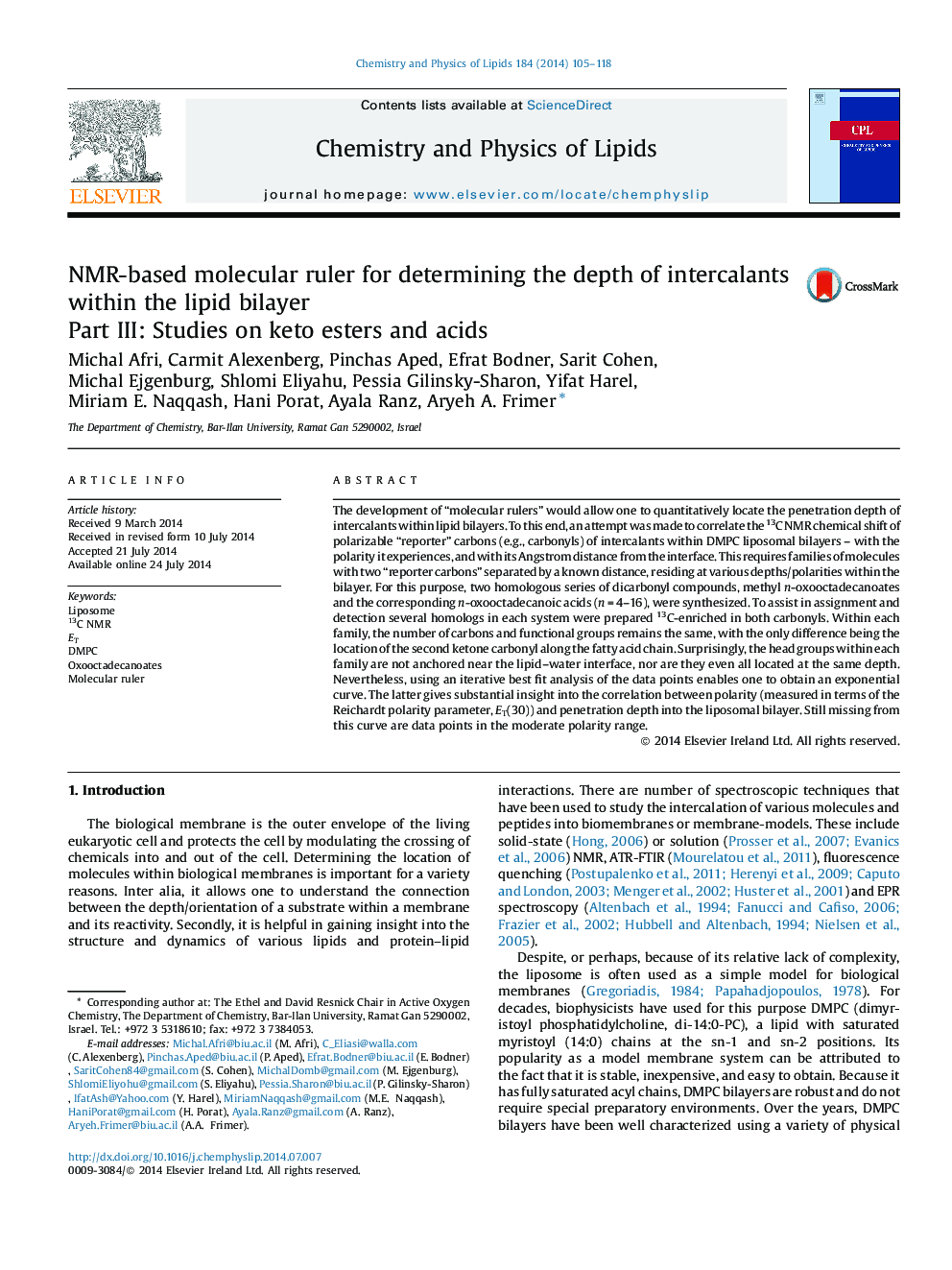| کد مقاله | کد نشریه | سال انتشار | مقاله انگلیسی | نسخه تمام متن |
|---|---|---|---|---|
| 1251737 | 1496293 | 2014 | 14 صفحه PDF | دانلود رایگان |

• Molecular rulers allow for the depth determination of intercalants within bilayers.
• The 13C NMR shift of a carbonyl correlates with the polarity it experiences.
• This polarity correlates with the intercalant’s Angstrom distance from interface.
• Intercalated n-oxodecanoate esters and acids (n = 4–16) yield carbonyl data points.
• Iterative best fit analysis of points yields initial ruler as an exponential curve.
The development of “molecular rulers” would allow one to quantitatively locate the penetration depth of intercalants within lipid bilayers. To this end, an attempt was made to correlate the 13C NMR chemical shift of polarizable “reporter” carbons (e.g., carbonyls) of intercalants within DMPC liposomal bilayers – with the polarity it experiences, and with its Angstrom distance from the interface. This requires families of molecules with two “reporter carbons” separated by a known distance, residing at various depths/polarities within the bilayer. For this purpose, two homologous series of dicarbonyl compounds, methyl n-oxooctadecanoates and the corresponding n-oxooctadecanoic acids (n = 4–16), were synthesized. To assist in assignment and detection several homologs in each system were prepared 13C-enriched in both carbonyls. Within each family, the number of carbons and functional groups remains the same, with the only difference being the location of the second ketone carbonyl along the fatty acid chain. Surprisingly, the head groups within each family are not anchored near the lipid–water interface, nor are they even all located at the same depth. Nevertheless, using an iterative best fit analysis of the data points enables one to obtain an exponential curve. The latter gives substantial insight into the correlation between polarity (measured in terms of the Reichardt polarity parameter, ET(30)) and penetration depth into the liposomal bilayer. Still missing from this curve are data points in the moderate polarity range.
Figure optionsDownload as PowerPoint slide
Journal: Chemistry and Physics of Lipids - Volume 184, December 2014, Pages 105–118